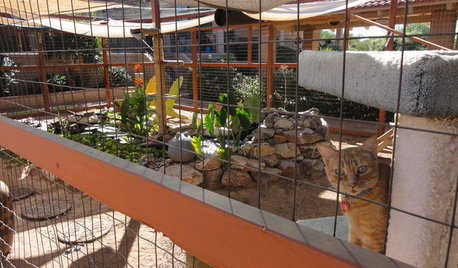Naming and Identification - Confusion, Frustration and Solutions
Getting descriptive information on various figs is a real task at times. Both identification and accessible descriptions/history are one of the larger problems that I have experienced as I have dealt with figs. Big forum topics revolve around soils, propagation, sharing photos, finding cuttings, identification issues and inquiries about characteristics of various varieties.
There are probably 30 or so figs that are commonly found in the trade (my rough estimate). I think that these are ones that are consistently and reliably identified and have reasonable historic information associated with them. Beyond that, it seems there are a tremendous number of ethnic figs, less known distinct varieties, found figs, unknowns, incorrectly named varieties, and ones with new made-up names that makes our task even more complicated. Matching the names to known names and getting descriptions, history, etc., is problematic.
The following categories seem appropriate to describe the situation and our dilemma.
1) Recent hybrids - Some figs that were hybridized within the past 100 years or so have stable names and can be sorted out. We know where those figs started and the 'original' name since a record usually exists somewhere. There may be some challenges finding the actual breeding parents though. Examples are LSU Purple, Conadria, Tena, Enderud, Hunt, etc.
2) Found in the wild - Figs that were found growing in a field somewhere also have a history. It is very likely that we can know who found it, where it originated, when it was found, the name given to the fig, etc. Of course most of our figs probably originated this way! Some relatively recent examples: Danny's Delight, Beall, Jack's Quarter Pounder, Norman's Yellow, etc.
3) Ancient known figs - Some ancient figs include Dottato, Sari Lop, Mission/Franciscana, Negrone, Verte, etc. These likely have stable names and a reliable history because they are such good figs. They are also unique and distinct from others.
4) Distinct variety names in the literature, from collectors, nurseries or the germplasm repository - Tracking where these and most figs originated is difficult since some are very old and have been around for centuries. In this particular situation there is a dead end of origination knowledge somewhat quickly although the names are fairly stable. These are solid good varieties, but one does wonder where they originated. Figs in this category are ones like Barnisotte, Col de Dame, Dauphine, Ronde de Bordeaux, Kala Heera, etc. Of course these figs are also known by other names.
5) Ethnic names - Some of our best figs fall in this category, but what is the varietal name that it might also be known by? How can we establish what is a valid name? Interesting thoughts to ponder - These are the figs that take on new names because of who brought it over, where the fig was most recently found, where it may have come from in the old country, etc. The trail goes cold rather quickly, usually going as far as someone's grandparent who brought it over or no trail at all since you just got it from a neighbor's yard. Examples are Hardy Chicago, Sal's #1, Long Island Green, Bella, Maryland Brown Turkey, Black Italian, etc. It would be great to match them up with figs that are described in the literature, or to find their 'other' more common name.
6) Incorrect names - We are all frustrated by this problem. Some nurseries have caused problems by making up a new more 'marketable' name which then almost completely eliminates the possibility of figuring out a fig's history. Catalogue descriptions are sometimes also jazzed up with incorrect information. Some collectors have also made mistakes that include variety mix ups, name misspellings, etc. Some examples are - Petite Negri aka Violet Bordeaux, Stella (not sure, might be Adriatic), Nero Caesar, Coconut Chiquita aka Chico Malibu (and even that is likely not the 'original' name), etc.
7) Unknown figs & names - These are usually figs that are found in someone's yard or a fig in which the name has been forgotten. When unknown figs (related to #6 and #5 above) are traded, they usually get assigned a new name, and sometimes that name persists for better or worse. A new temporary name is good because one can track the fig back to its name originator, hopefully getting it identified someday. It is bad because it complicates matters adding 'another' fig to the mix - another fig which might be the same as something else you have collected, etc. If the history of that exchange gets lost, then we are back to square one. If a good fig is found, it does need a name - the history somehow needs to be kept somewhere. Examples: Pananas Greek (now determined to be a Brown Turkey), Old Home 1895, Takoma Violet, Kathleen's Black, Lindhurst White, etc.
8) Multiple names, different figs - Similar to other problems, this is when one name is used to describe more than one fig. This can be confusing when you think that you have one particular fig but discover that you have something else with a similar name, etc. Examples are Paradiso, Everbearing, Lattarula, Lemon, Petite Negri, etc.
9) A name but what is it? - Again related to problems mentioned above. These are figs in which little if anything at all is written about them. What are these figs, who found them and where did they come from? Again, tracking the origins of these is difficult and the trail gets cold quickly. Examples, Armenian, Shar Amber, the numbered figs from UCDavis, Atreano, etc.
10) Multiple names - This is a very confusing situation when one fig ends up taking on a pile of different names, again related to issues above, particularly #8. Examples: a) Brunswick, aka Dalmatian, Madonna, Magnolia, etc b) Celeste, aka Blue Celeste, Honey fig, Improved Blue celeste, Malta, Tennesse Mtn fig, Sugar fig c) Calimyrna aka Sari Lop. d) etc!
11) What is an original name? - This is a complex topic for discussion. Likely, it is the name that was attached to the variety at the earliest point in time that is possible. How is this determined considering that so much time has passed since some of these figs were first cultivated? Look at Dattato for example, a fig we more commonly know as Kadota. There are some 20 different names that this fig has gone by according to Condit's Monograph and I am sure more names have been invented since his writings.
12) A new naming system? Is there a better way to name figs? Not sure. I like the variety of names, some of which are exotic sounding. It is hard to imagine reducing them to a number or something similar. Fig names in France and Italy seem be more descriptive. Descriptive words there might include an original location, color, size, etc. Some thoughtful consideration could be applied to this issue. So, do we use the name Franciscan or Mission?
13) Local Names - This is a complex issue related to #10 and other issues outlined above. Some figs for example, grown in the various Mediterranean countries may be the same varieties but have different names. The names within those countries may also vary from region to region. Some of these varieties have been cross referenced by researchers, but it adds to the difficulties of unifying which varieties are which. For example the well researched document (mentioned below) that describes figs from Mallorca, lists 44 figs. A fine attempt to list synonyms is made but is likely not comprehensive, including all known names. Example: Synonyms for the Mallorcan fig Bordissot Blanca are Burdasciotta, Bourgeassotte, de Fraga, and Blanca.
My wish is for a comprehensive database to be developed whereby folks could work through a systematic key to narrow down, for example, a better identity for ethnic figs, etc. Having a database that has various characteristics that can be searched would be very useful for identification purposes. Included in such a database would also be a good quality photographic collection that includes foliage samples and fruit - inside and out, ripe and unripe. Additionally I think it would be useful and interesting to include some of the ethnic stories associated with particular figs.
I have listed some resources and studies below that outline various useful descriptive terms that should be included in the searchable database. Using consistent descriptors is also essential - for example, settling on acceptable color names so that if one is searching for a light green fig, it does not get missed because the color was keyed in as white. It could be noted that there is variation as is necessary to describe it. Descriptions might also be categorized both as Âgeneral descriptions and more detailed.
Local climate and soil issues further complicate identification, leading to local variation. A fig will perform as well as the environment you provide for it I donÂt think environmental variations should be a serious limiting factor for such a database.
Of course, DNA analysis is the ultimate tool in sorting things out, but cost is prohibitive. Someday this may become feasible, but for now we should rely on descriptions that have developed over the past century. There has been some good progress on this but multiple resources still must be reviewed, and that takes time and some familiarity with the scientific descriptions, etc. The following are some useful resources on this topic:
1) Jon at Figs for Fun has developed a good site http://figs4fun.com/ with nice photos and basic descriptions for some of the figs, drawing on descriptions written by others.
2) Rays Givan's site is also very useful http://home.planters.net/~thegivans/ - nice descriptions, some photos and personal analysis. He makes an attempt to help us describe figs properly.
3) Fig Varieties, A Monograph by Ira Condit - excellent resource, but no photos. http://californiaagriculture.ucop.edu/0702AMJ/pdfs/FigMonographHilgardia.pdf
4) Caracterització de cultivars de figuera a Mallorca by Josep Rosselló i Botey, (71.3 MB PDF), http://www.caib.es/sacmicrofront/archivopub.do?ctrl=CNTSP760ZI5190&id=5190 This is an enormous file - so plan ahead if you would like to download it. I really like the way the descriptions are organized, etc. It is very systematic and has excellent photographs. It is in Catalan - no English, you can cut out paragraphs and paste them into the Google Translator.
5) Bob (Kiwibob) made a proposal a few years ago to create a photo database that we would all have access to use. Having a good photo of the fruit, inside and out and the leaf shapes for as many figs as possible was the goal. I think that he was also interested in collecting photos from others to make this database work. He approached some of the most knowledgeable folks who declined to collaborate for various reasons. http://www.geocities.com/kiwibobg/kiwifruitsalad3
6) Fig Characteristics Useful in the Identification of Varieties by Ira J. Condit in Hilgardia, A Journal of Agricultural Science published by the California Agricultural Experiment Station. 14; 1 (May 1941) This is an excellent resource.
7) Problems Identifying Fig Varieties by Alex Hart http://www.wanatca.org.au/acotanc/Papers/Hart-1/index.htm
8) European Minor Fruit Tree Species Database from Università degli Studi di Firenze http://www.unifi.it/project/ueresgen29/netdbase/s1/dbs1.htm and the actual description key http://www.unifi.it/project/ueresgen29/netdbase/s1/dls1.htm
9) Descriptors for Fig from IPGRI and CIHEAM - Biodiversity International. 2003 International Plant Genetic Resources Institute, Rome, Italy, and International Centre for Advanced Mediterranean Agronomic Studies, Paris, France. http://www.bioversityinternational.org/fileadmin/bioversity/publications/pdfs/907.pdf I had trouble downloading it and got it directly from their web guru. It is a very good checklist. (I could send it if you canÂt get it downloaded)
10) The Fig - Its History, Culture and Curing with a Descriptive Catalogue of the Known Varieties of Figs by G Eisen from. U.S. Department of Agriculture Division of Pomology. Bulletin #9 . 1901. 317 pages. http://books.google.com/books?id=7dZBAAAAIAAJ&pg=PA181&lpg=PA181&dq=%22the+fig+its+history%22+eisen&source=web&ots=w1kBN09HCH&sig=pGPCB0oUq28qxF0TCxv4KCMhdM0#PPA5,M1
11) http://www.ficuscarica.com - This is a good new online variety resource that is developing.
An example of a very good publication is a book produced in Canada called ÂOur Plums by Shahrokh Khanizadeh and Johanne Cousineau. http://www.pgris.com/book-poster/plum-book/description.asp You can see a sample page here http://www.pgris.com/book-poster/plum-book/pdf-file/sample-plum.pdf I think that this is a fine example of what could be done for figs sometime in the future, although with the great number of varieties, it might be prudent to limit what is published in a book and put the rest on an online database.
In conclusion, I wish some of these resources were combined so that our figs could be sorted out more easily. To complete such a project someone or organization needs some multi-year funding to do the job well. Despite some frustrations with names, I don't have too much to complain about. If I get a highly recommended fig from a collector, I am happy no matter what its name is. A fine tasting fig, a family fig, etc., is a good fig no matter what the name.
Ingevald
Lawrence, Kansas













pitangadiego
steve_nj8
Related Discussions
Finding the Tennessee Mountain Fig
Q
Frustration with eating
Q
Frustrated with architect - who is responsible for what?
Q
I could just cry, SO frustrated
Q
italiangirl74
ingevaldOriginal Author
dieseler
italiangirl74
pitangadiego
dieseler
italiangirl74
steve_nj8
dieseler
steve_nj8
dieseler
steve_nj8
oxankle
eukofios
italiangirl74